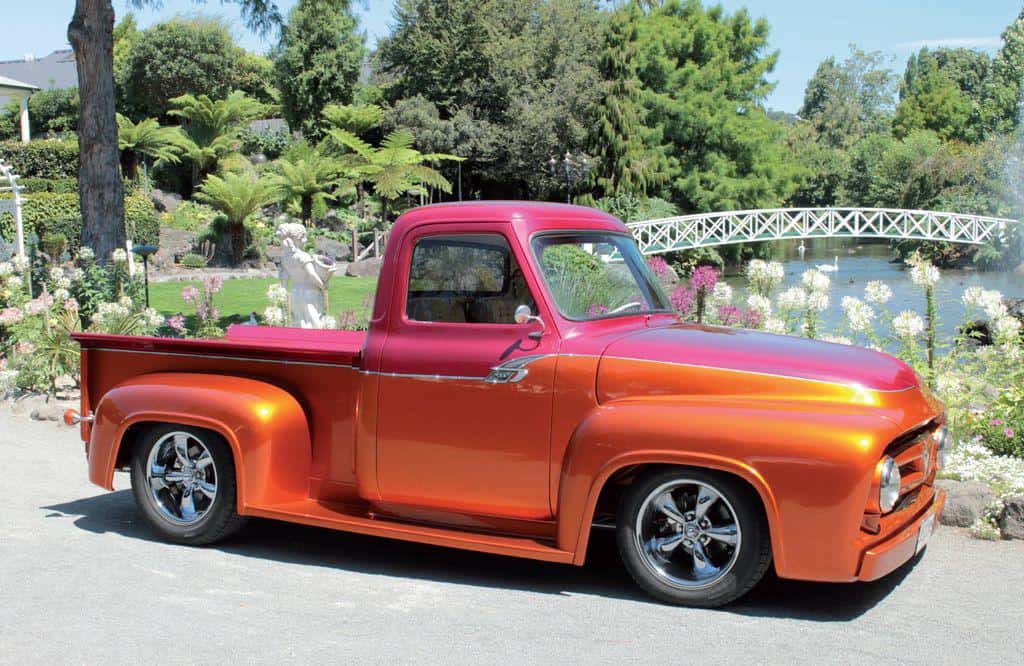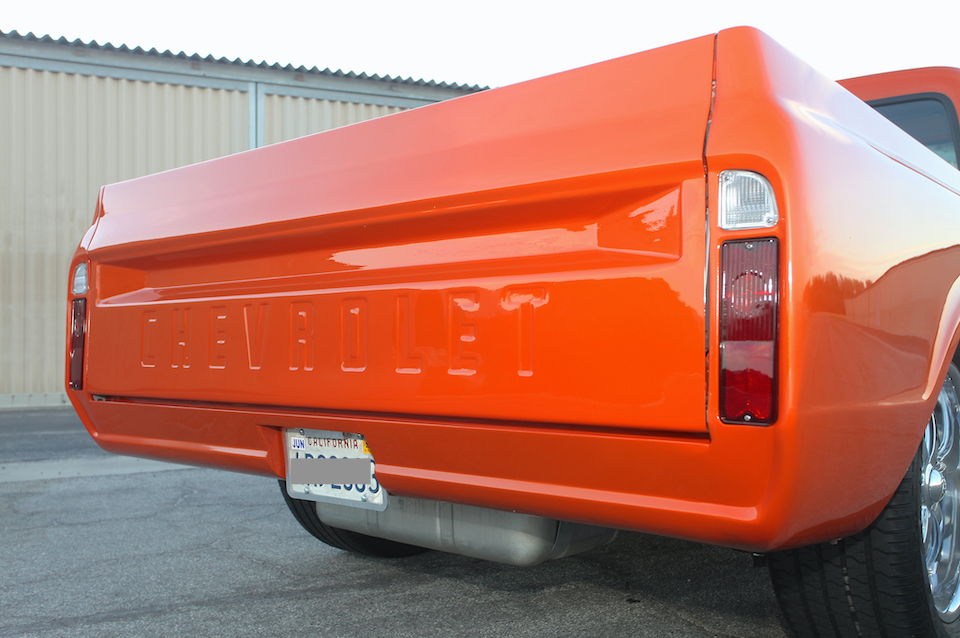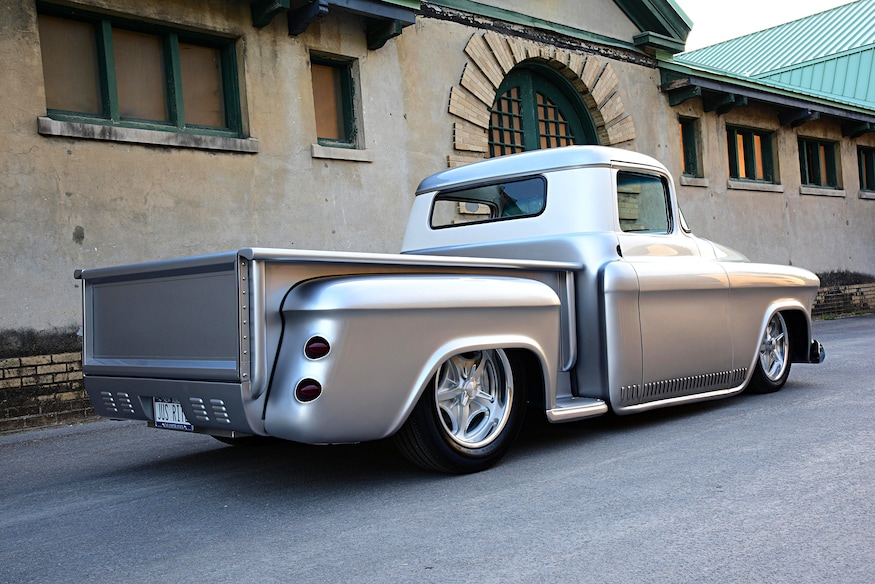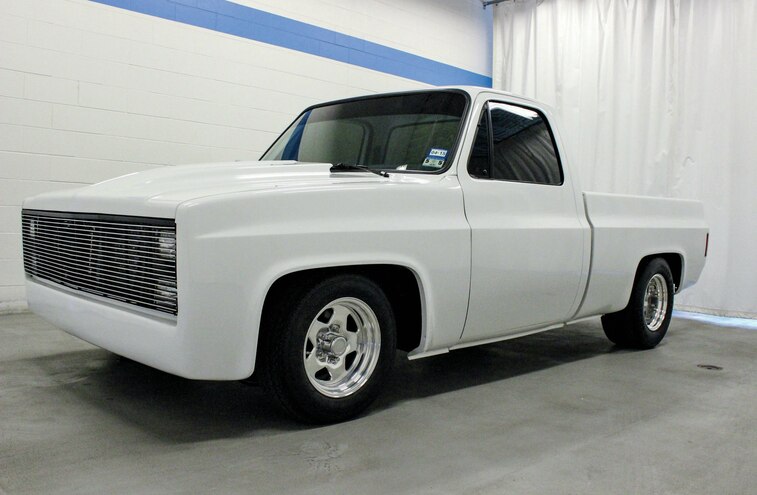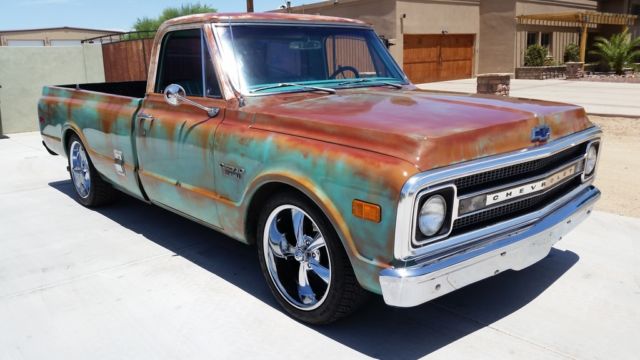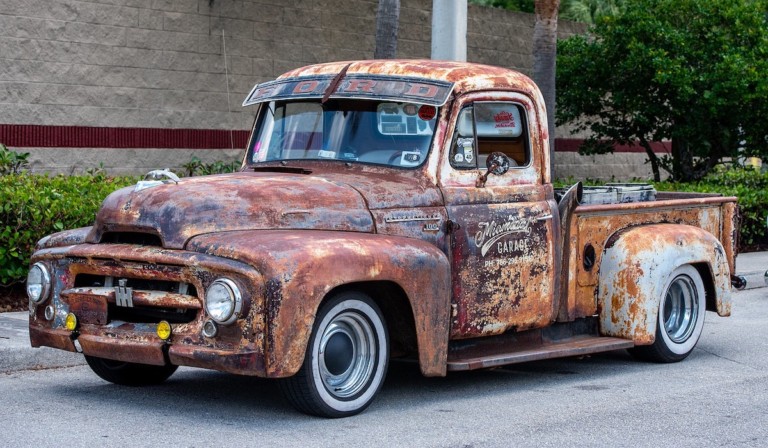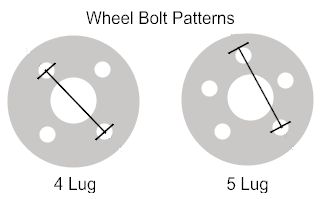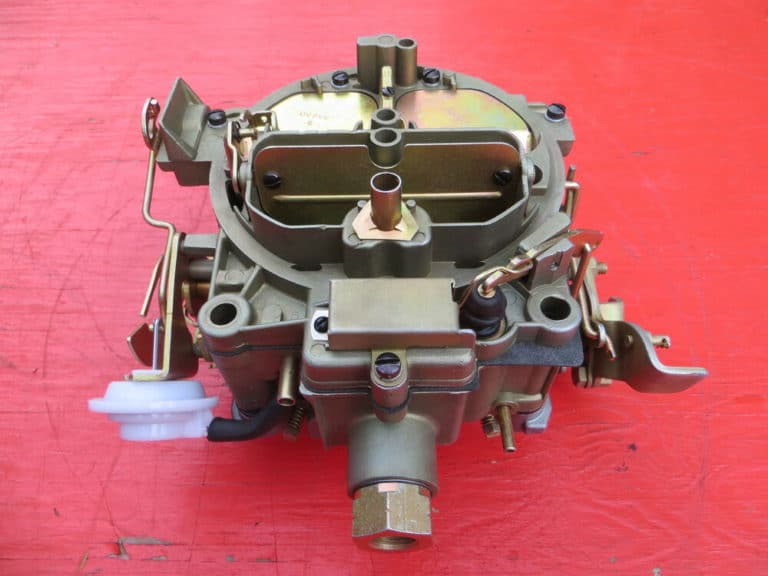Answers to Questions About Roll Pan Bumpers: What, How, and Are They Legal?
Some of us like a smooth and lowered look to our trucks. We do this by installing custom built roll pans, drop spindles, flipping our rear leaf springs and many other ways to get the smooth, low look we desire.
What is a roll pan bumper? A roll pan is a piece of formed metal or fiberglass that is inserted in place of original bumpers and provides a seamless look on a truck. Roll pan bumpers can be easily installed by a DIYer in a short amount of time. Legality is determined by state law.
I decided to research roll pan bumpers, what they are, how to install them, if it’s something you should consider having on your truck– and if they are legal.
What Is A Roll Pan Bumper?
A roll pan bumper is a replacement for a bumper that essentially deletes the bumper and makes it look like a rounded bottom on the back or front of the truck.
If you use your truck for towing, or you get in the back a lot so that you use your bumper as a step, then these may not work for you. When you install roll pans it is for one thing: looks.
One of the first modifications I made to my 1972 Chevy C10 was adding front and rear roll pans. I really like the smooth and sleek look this gives my truck especially since I’ve lowered it about four inches.
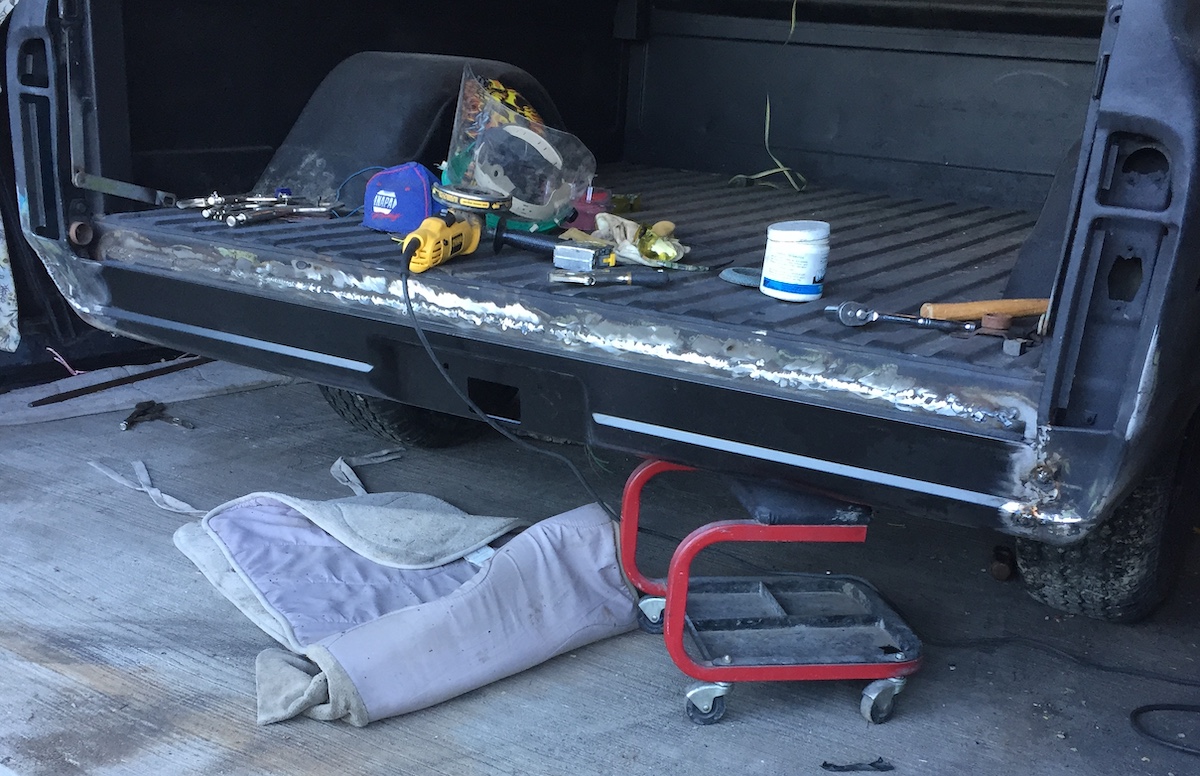
My pans are made of rolled 18 gauge steel that I welded in place and they have the correct roll and curve to fit nearly exact between the fenders. They do not cause any problems with the use of my tailgate or any other part of the truck. They can also be purchased in fiberglass, carbon and plastic which are bolted or riveted in place. You then have the option of filling in the seams with Bondo if you want a completely smooth look.
Before I made my decision to use roll pans I had priced new OEM bumpers and was quite surprised by how much they cost. I would be in them $500 to $600 for decent– but not top of the line– quality and I really didn’t like the way they would look on a lowered truck.
Roll pans are available for nearly any make or model of truck made and most of them come unpainted so that they can be better matched to your vehicle’s paint color. Here is an example on Amazon of a rear roll pan for a 1972 Chevy C10 truck:

Why Do Vehicles Have Bumpers?
Bumpers offer protection, looks, and functions such as pushing or pulling things. Modern bumpers are now designed with pedestrian safety in mind as well as vehicle safety.
Regulations for automobile bumpers have been implemented for two reasons – to allow the car to sustain a low-speed impact without damage to the vehicle’s safety systems, and to protect pedestrians from injury. These requirements are in conflict: bumpers that withstand impact well and minimize repair costs tend to injure pedestrians more, while pedestrian-friendly bumpers tend to have higher repair costs.
Shuler, S.; Mooijman, F.; Nanda, A
The stock rear bumper of a truck is more function than form. Not only does it serve as a step for access to the truck bed, but it also provides protection in the case of an accident. Most bumpers are designed for 2.5 mph impacts, but will also help deflect damage and impact at higher speeds.
The most typical experience with impact bumpers is in parking lots where impacts are usually at slower speeds. The rear bumper will protect the body of the truck in case of a small bump from another car. If you have a roll pan, there is more likely a chance to damage the paint and rear body work.

Are Roll Pan Bumpers Legal On a Truck?
Whether roll pan bumpers are legal depends on the type of vehicle, the year it was manufactured, whether it had bumpers originally, various state laws, the height of the bumpers, and the exemptions some states make for classic, old, hot rod, or other vehicle types.
Federal standard differ for cars and other types of vehicles.
Federal bumper standards applies to front and rear bumpers on passenger cars to prevent the damage to the car body and safety related equipment at barrier impact speeds of 2½ mph across the full width.
Are all vehicle classes required to meet the Federal bumper standard?
sparebumper.com
No. The Federal bumper standard does not apply to sport utility vehicles (SUVs), minivans, or pickups trucks; only passenger cars. The agency has chosen not to regulate bumper performance or elevation for these vehicle classes because of the potential compromise to the vehicle utility in operating on loading ramps and off road situations.
Street rods typically also have different rules. In Oregon for example the statute allows: “The hood, bumpers and fenders of the vehicle may be removed from the vehicle.” (https://www.oregon.gov/odot/dmv/docs/vcb815.pdf)

A bumper that protects vehicle components from damage at 5 miles per hour must be four times stronger than a bumper that protects at 2.5 miles per hour, with the collision energy dissipation concentrated at the extreme front and rear of the vehicle. Small increases in bumper protection can lead to weight gain and loss of fuel efficiency.
wikipedia
Whether roll pan bumpers are legal is one of the most discussed topics on truck forums. This question has different answers depending on the state and the type of vehicle– whether it is a car or a truck or SUV. Some say they are legal in their states and some people say they are not. I live in rural Idaho and have never heard of anyone being given a citation for not having original bumpers.
Check with your state motor vehicle statutes for the most up-to-date information about the current legality of roll pan bumpers for your particular vehicle type.
Having said that I looked up Idaho law and it appears if they really wanted to they can ticket you for having rolled bumpers.
Here is how its written in Idaho: “Bumpers, unless specifically exempt in subsection (1) of this section, shall be at least four and one-half (4 1/2) inches in vertical height centered on the vehicle’s centerline by bolting or welding to the vehicle frame as originally installed by the vehicle manufacturer. Bumpers shall be horizontal load bearing and attach to the vehicle to effectively transfer energy when impacted and shall extend in width to the originally manufactured tread width for the vehicle.“
The exemptions in Idaho are for:
- Street rods
- “Idaho Old Timer” Any motor vehicle manufactured prior to January 1, 1943, that is maintained to its original appearance
- “Classics” Any motor vehicle or motorcycle which is at least thirty (30) years old that does not qualify as an “Idaho Old Timer” and that is maintained to its original likeness
A big consideration for safety concerns is the height of your bumper, more than whether it is rolled or not. Height is important for crashes involving lifted trucks and sedans, for instance.
| State | Height limits | Other |
| Idaho | front bumper can be up to 24 inches and the rear 26 inches | 4,500 pounds or less |
| Idaho | 27 inches in front and 29 in back | 4,501 to 7,500 pounds |
| Colorado | Headlights can’t be more than 44 inches high, while taillights reach their limit at 72 inches | not allowed unless you follow the head and tail light rules |
| Indiana | bumper needs to stay within 3 inches of the factory height | headlights at 54 inches |
| Kentucky | Currently, there are no restrictions on terms of bumper height | |
| Nevada | The bumper height, be it front or rear, cannot go beyond 24 inches | |
| Oregon | Oregon doesn’t have a maximum bumper-height law | headlights can be only 54 inches from the center of the headlight to the asphalt |
| Wyoming | There are no official statutory guidelines for bumper height | the vehicle must simply be in “safe” working condition |
How Easy Is A Roll Pan To Install?
With the advent of lightweight pans, we can now outfit our trucks with a roll pan in less than an hour. This can be done with a simple list of tools and some pretty simple steps. Here’s a list of tools you need.
- Paint
- Screws
- Wrench
- Roll pan
- Drill bits
- Duct tape
- Flashlight
- Power drill
- Screwdriver
Heres some easy steps to follow:
- First remove your license plate and remove your tailgate.
- Disconnect the taillight wiring from the connections.
- Remove the rear bumper.
- Install the roll pan by positioning one of the lower end tabs of the pan into the truck bed’s lower rear quarter panel. While holding the pan in place, slowly incline the other edge of the pan until you can insert the other lower tab into the bed’s rear quarter panel. Carefully move the pan upward, until its upper edge is aligned just under the truck’s bed floor.
- Align the roll pan properly by adjusting the pan up and down and side to side. Use the duct tape to temporarily hold the pan in place. Reinstall tailgate and make sure it works smoothly.
- Secure the roll pan in place. Using the power drill, insert the screws into the predrilled holes on the top of the pan. With the drill bit, create a small hole through the truck’s lower rear quarter panel and through the flange of the pan. Slide the screws in place and tighten them to firmly hold the pan in place.
- Paint as desired.
- Put back the tailgate and license plate and bracket.
Final Thoughts
I personally really like the look of roll pans on lowered trucks, but not so much on trucks that keep their stock height. Everybody has their own tastes and that is what makes this hobby fun. My pans are welded in so if I do get in a wreck it will probably cause a lot of damage. I don’t put a lot of miles on my truck so I’m not too worried about it. Happy Trucking!
Sources: wikipedia
Shuler, S., Mooijman, F., and Nanda, A., “Bumper Systems Designed for Both Pedestrian Protection and FMVSS Requirements: Part Design and Testing,” SAE Technical Paper 2004-01-1610, 2004
sparebumper.com
www.oregon.gov
